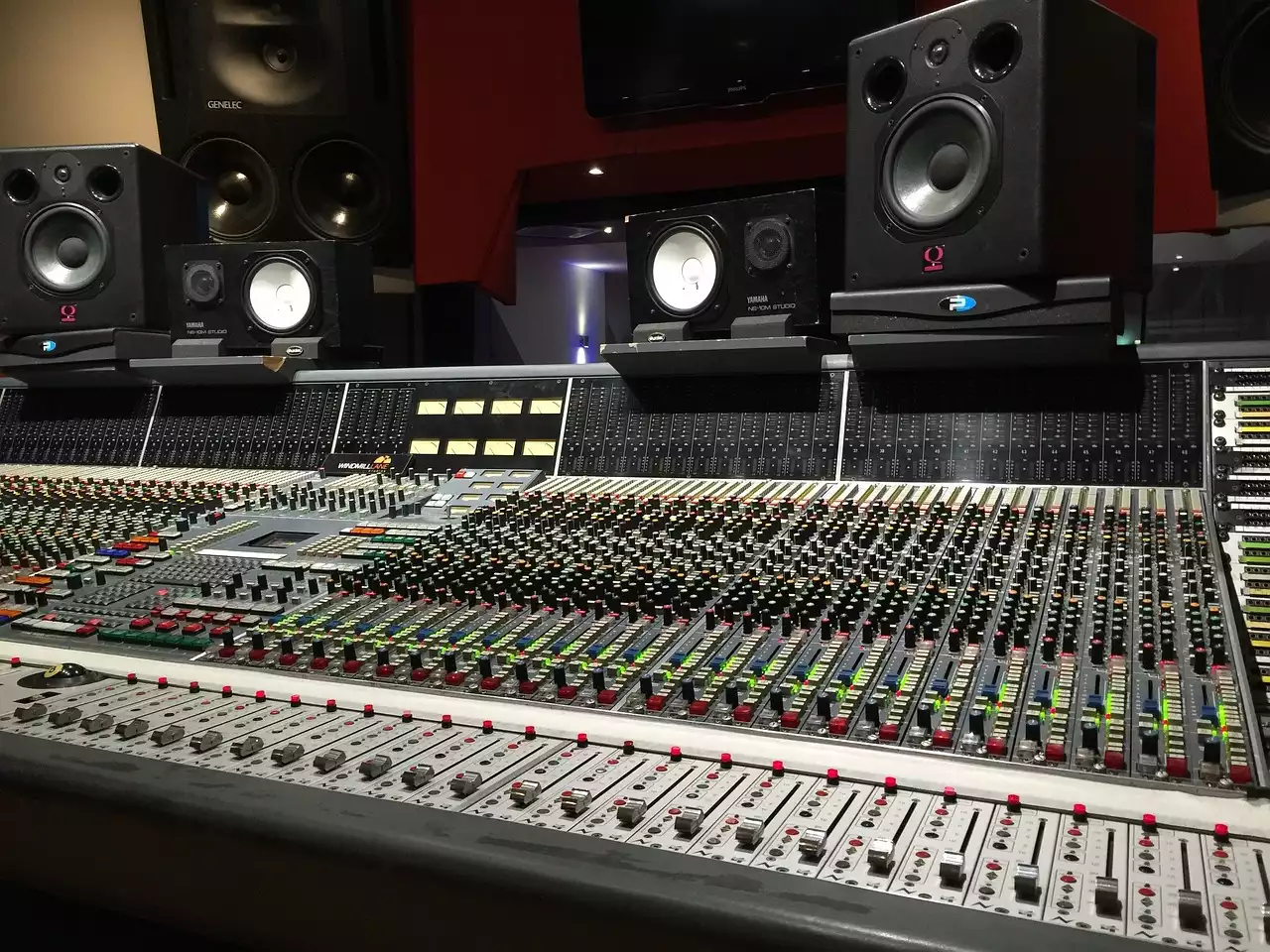The Evolution of Electronic Music
Electronic music has come a long way since its inception. Its roots can be traced back to the early 20th century, when pioneers like Luigi Russolo and Edgard Varèse started experimenting with electronic sound-making devices. These early experiments laid the foundation for what would eventually become a global phenomenon.
In the 1950s and 1960s, composers such as Karlheinz Stockhausen and Pierre Schaeffer further advanced the field by exploring the possibilities of tape manipulation and electronic synthesis. Their groundbreaking work opened up new avenues for musicians to express themselves and paved the way for the birth of electronic music as we know it today.
As technology continued to evolve, so did electronic music. The introduction of synthesizers in the 1960s and 1970s revolutionized the genre, allowing musicians to create entirely new sounds and textures. Artists like Kraftwerk, Brian Eno, and Jean-Michel Jarre embraced this new technology, pushing the boundaries of electronic music and captivating audiences with their innovative compositions.
Technology's Impact on Electronic Music Production
One of the defining characteristics of electronic music is its reliance on technology for production. From the early days of tape machines and analog synthesizers to the modern digital workstations and software plugins, technology has played a crucial role in shaping the sound of electronic music.
With advancements in technology, musicians now have access to a vast array of tools and techniques that allow them to create complex and intricate compositions. From sequencers and drum machines to virtual instruments and samplers, the possibilities are endless. These tools not only make production more accessible but also enable artists to push the boundaries of creativity and experiment with new sounds.
In addition to production tools, technology has also revolutionized the way music is distributed and consumed. Digital platforms and streaming services have made it easier than ever for artists to share their music with a global audience. This democratization of music has opened up opportunities for emerging artists to be discovered and has helped electronic music reach a wider audience.
The Role of Human Rhythm in Electronic Music
While technology is a crucial component of electronic music, it is the human element that brings it to life. At the heart of electronic music lies the rhythm, which is deeply rooted in human expression. Whether it's the driving beat of a techno track or the syncopated grooves of a house tune, the rhythm is what moves our bodies and connects us to the music on a primal level.
Electronic music producers often draw inspiration from various genres and cultures to create unique rhythmic patterns. By manipulating the timing and intensity of each sound, they craft intricate rhythms that captivate listeners and compel them to dance. It is this human touch that adds depth and emotion to electronic music, elevating it beyond mere technical precision.
Creating a Harmonious Blend of Technology and Human Rhythm
The magic of electronic music lies in the ability to create a harmonious blend of technology and human rhythm. It is the delicate balance between the precise control offered by technology and the organic, unpredictable nature of human expression that gives electronic music its unique charm.
Producers spend countless hours tweaking and refining their sounds to strike the perfect balance between electronic precision and human emotion. They use technology to shape and mold their compositions, adding layers of complexity and texture. But it is their understanding of human rhythm and their ability to inject their own personality into the music that truly sets them apart.
To achieve this harmonious blend, producers often experiment with different techniques and approaches. They may layer organic sounds with electronic elements or incorporate live instrumentation into their compositions. By combining the best of both worlds, they create a sonic landscape that is rich and captivating.
Tools and Software for Electronic Music Production
The evolution of technology has given rise to a plethora of tools and software specifically designed for electronic music production. These tools range from hardware synthesizers and drum machines to software plugins and digital audio workstations (DAWs).
Hardware synthesizers, such as the iconic Roland TB-303 and Moog Minimoog, have become synonymous with the electronic music genre. These instruments offer a tactile and hands-on approach to sound design, allowing producers to sculpt their sounds in real-time. Drum machines like the Roland TR-808 and TR-909 have also played a significant role in shaping the rhythmic landscape of electronic music.
In recent years, software plugins and DAWs have gained popularity due to their flexibility and affordability. Plugins like Native Instruments' Massive and Xfer Records' Serum offer a wide range of synthesis options, allowing producers to create intricate and unique sounds. DAWs like Ableton Live and Logic Pro provide a comprehensive platform for music production, offering tools for recording, arranging, and mixing.
The Future of Electronic Music and Its Relationship with Technology
As technology continues to advance, the future of electronic music Festivals looks promising. New tools and techniques are constantly being developed, pushing the boundaries of what is possible. From AI-powered music composition to virtual reality performances, the possibilities are endless.
Advancements in virtual reality and augmented reality are also opening up new avenues for live performances and immersive experiences. Artists are now able to create virtual worlds where the audience can interact with the music in ways never before imagined. This fusion of technology and music has the potential to revolutionize the live music experience and create new opportunities for artistic expression.
Famous Electronic Music Artists Who Exemplify the Harmony between Technology and Human Rhythm
Throughout the history of electronic music, there have been countless artists who have exemplified the harmony between technology and human rhythm. These visionaries have pushed the boundaries of the genre and have left an indelible mark on the electronic music landscape.
One such artist is Aphex Twin, known for his complex and intricate compositions. He has embraced technology throughout his career, using it as a tool to create otherworldly sounds. His music is a perfect example of the harmonious blend of technology and human expression, captivating listeners with its intricate rhythms and ethereal melodies.
Another artist who has mastered the art of blending technology and human rhythm is Björk. Her music is an amalgamation of organic and electronic elements, creating a unique sonic landscape that is both innovative and captivating. She has continuously pushed the boundaries of electronic music, experimenting with new sounds and techniques.
Exploring the Different Subgenres of Electronic Music
One of the most fascinating aspects of electronic music is its diverse range of subgenres. From ambient and downtempo to techno and drum and bass, each subgenre offers a unique sonic experience and attracts a dedicated fanbase.
Ambient music, characterized by its atmospheric and expansive soundscapes, creates a sense of tranquility and introspection. Artists like Brian Eno and Harold Budd have pioneered this genre, using technology to create immersive sonic environments.
Guide to Electronic Music Genres
Techno, on the other hand, is known for its driving beats and hypnotic rhythms. Originating in Detroit in the 1980s, techno has evolved into a global phenomenon, with artists like Carl Cox and Richie Hawtin leading the way.
Drum and bass, with its fast-paced breakbeats and heavy basslines, is another popular subgenre of electronic music. Artists like Roni Size and Goldie have played a significant role in shaping the sound of drum and bass and attracting a dedicated fanbase.
Embracing the Synergy between Technology and Human Rhythm in Electronic Music
In conclusion, electronic music represents the perfect marriage between technology and human rhythm. From its humble beginnings to its current global dominance, electronic music continues to captivate listeners with its unique blend of precision and emotion.
What is Techno?
As technology continues to evolve, the future of electronic music looks bright. Artists are pushing the boundaries of what is possible, creating new sounds and experiences that captivate audiences around the globe. It is through this harmonious blend of technology and human expression that electronic music will continue to evolve and resonate with listeners for years to come.
So next time you find yourself lost in the pulsating basslines and ethereal synths of an electronic track, take a moment to appreciate the harmony between technology and human rhythm that lies at the core of this captivating genre.








